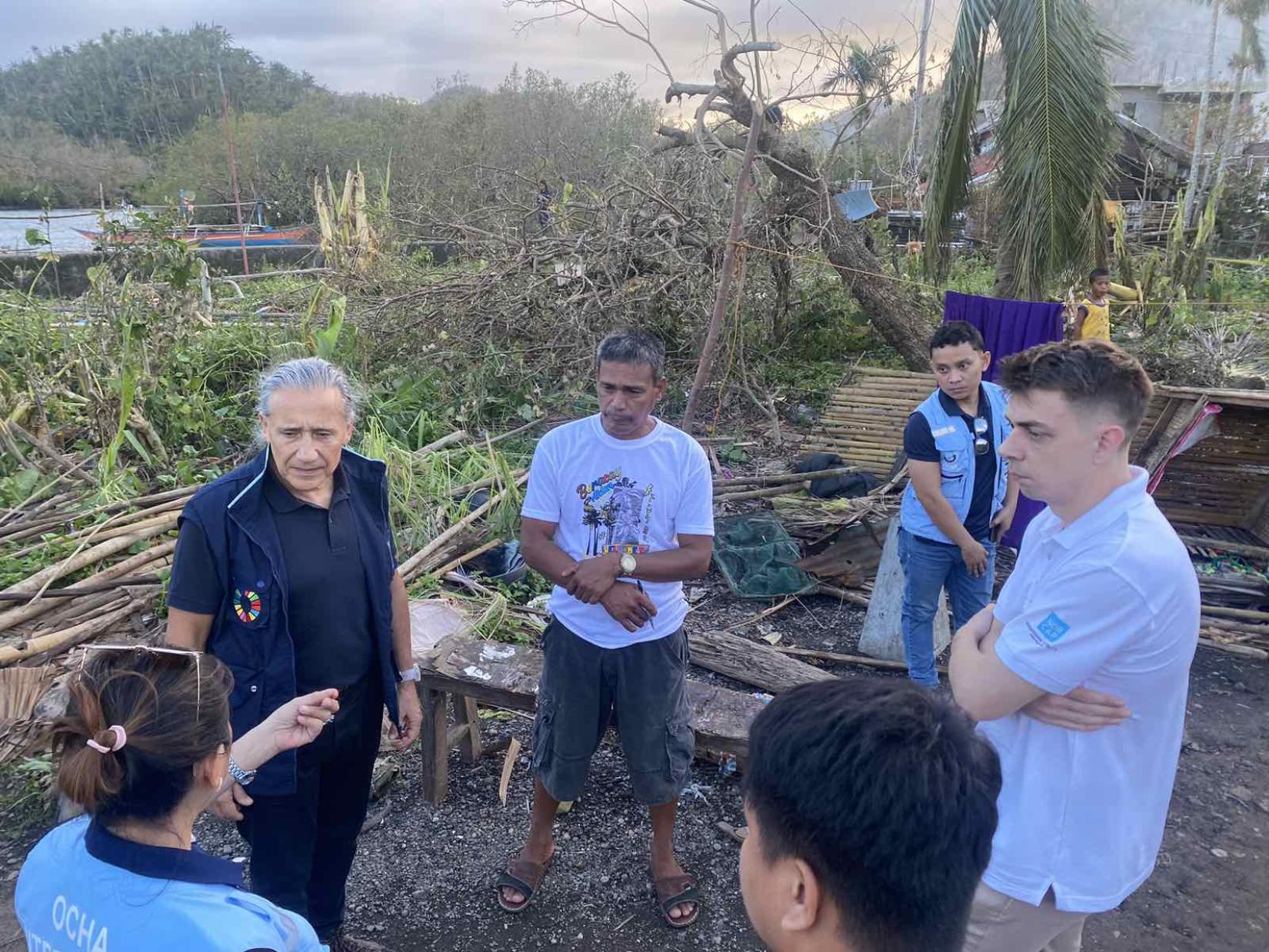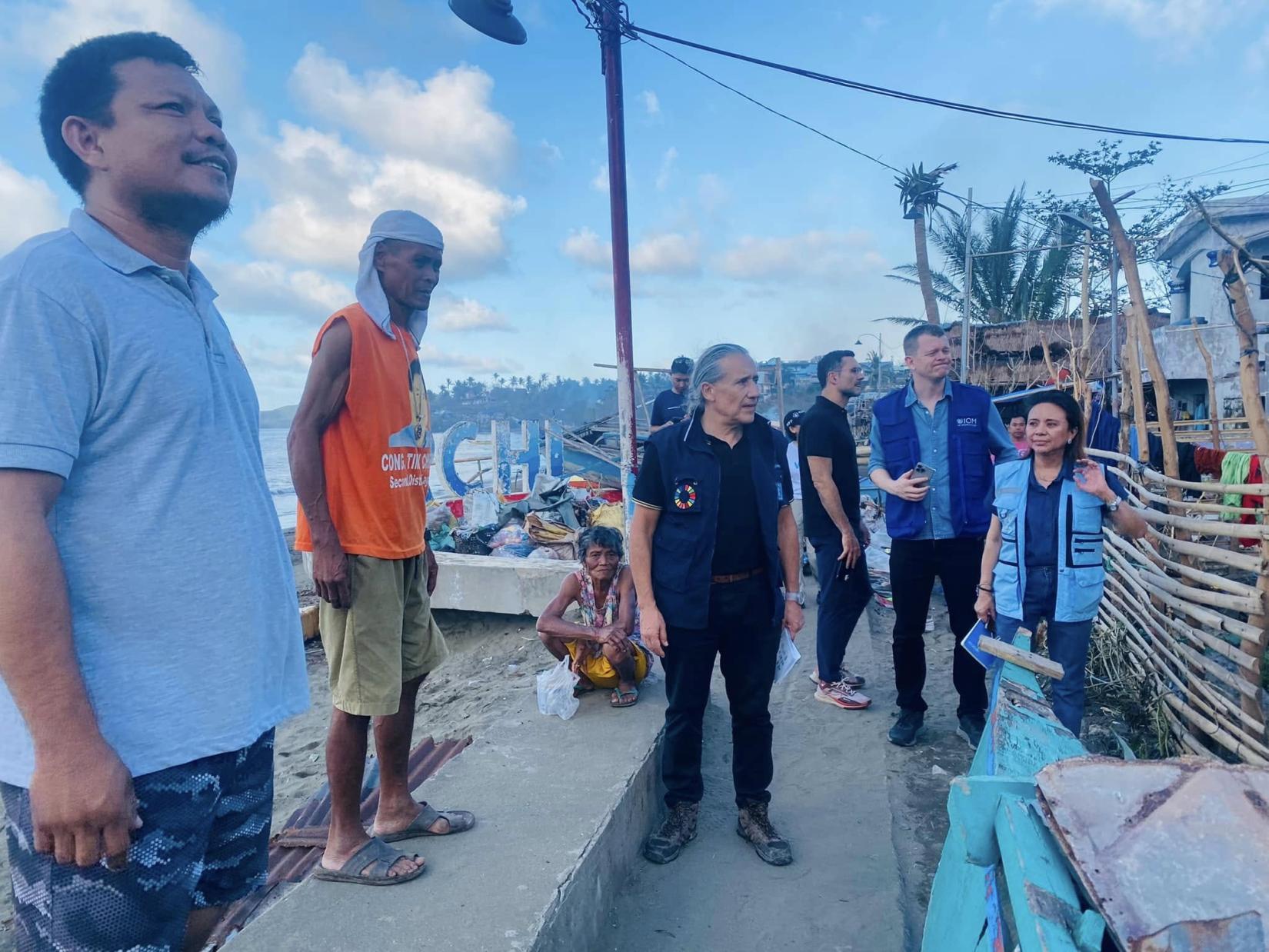UN confirms US$ 10.5 M support following impact of typhoons
06 December 2024
MANILA, PHILIPPINES – An allocation of US$ 10.5 million (or around PhP 607 million) from the United Nations Central Emergency Response Fund (CERF) was released to facilitate relief efforts in the hard-hit provinces affected by the recent series of tropical cyclones.

The announcement was made with the launch of the revised Humanitarian Needs and Priority Plan (HNP) which aims to support urgent and lifesaving needs.
“Following more devastation in an unprecedented typhoon season affecting almost 13 million people, the Humanitarian Country Team has since increased its target to US$ 42.4 million (or PhP 2.47 billion) under the updated HNP – with US$ 10.5 million from the UN-CERF”, UN Philippines Resident Coordinator and Humanitarian Coordinator Gustavo González said at a briefing with the press Thursday.
UN-CERF’s contribution is aligned with the ongoing relief efforts of the government and will be implemented by the World Food Programme (WFP), the International Organization for Migration (IOM), the Food and Agriculture Organization of the United Nations (FAO), the UN Population Fund (UNFPA) and the UN Children’s Fund (UNICEF).
“These overlapping typhoons aggravated the humanitarian situation and exhausted local response capacities across all regions affected. The time to act is now,” he added.
Over the last five weeks, the Philippine Humanitarian Country Team (HCT), led by the United Nations, is urging donors and partners to come forward and help relief efforts through the HNP. As of December 5, 2024, a total of US$20.1 million (PhP 1.17 billion) is needed to meet the revised targets while at least US$22.3 million (PhP 1.3 billion) of contributions are already identified under the plan.
The updated HNP will now support more than 535,000 people in nine key provinces in Luzon including Batanes, Cagayan, Isabela, Aurora, Batangas, Camarines Sur, Albay, Catanduanes, and Camarines Norte.
It will help the government and humanitarian partners in delivering lifesaving assistance – from emergency shelter, health, nutrition, water, early recovery, to hygiene and sanitation support over the course of the next six months. Initial funding requirement for the HNP was pegged at US$ 33 million (PhP 1.92 billion) to assist 210,000 individuals.
“In a global context of competing humanitarian crisis, we are grateful for the massive support of friends of the Philippines to our HNP, said Gonzalez. “We count now with contributions from various partners, which represents more than half of the targeted amount”, Gonzalez said.
The government of the United States of America has committed US $6 million to support logistics, shelter, water, sanitation and hygiene (WASH), and other initiatives related to disaster response. The Australian government also allotted US$ 3.5 million for food security, gender protection, and livelihood recovery efforts while Germany pledged US$ 400,000.
Contributions from the governments of the United Kingdom (US$ 1.25 million through UNICEF and WFP) and Canada (US$ 355,872 through WFP) will also be allocated to the 4Ps Program.
The government of the Republic of Korea pledged a US$500,000 contribution to help disaster response in the country. The cash assistance will complement ongoing aid by the Department of Social Welfare and Development and WFP to the Bicol region, particularly under the 4Ps (Pantawid Pamilyang Pilipino) Program.
“We are gradually making strides in gathering resources and thankful to each and one of our donors who heeded our call,” González said. “We still urge our partners to continue helping us fill long-term and critical gaps for recovery and help us reach the targets under the Humanitarian Needs and Priorities (HNP) Plan.”

Directing support to the most vulnerable communities
Resources gathered under the updated HNP will benefit hard hit communities in the province of Catanduanes, among others, where super typhoon Pepito (internationally known as Man-Yi) made its first landfall on 16 November.
Catanduanes Governor Joseph Cua also emphasized the urgency for recovery assistance as most communities in the province are reliant on agriculture as their primary source of income. The province is known for producing 35 per cent of the country’s abaca (Manila hemp) supply.
With most of the agricultural areas destroyed by the series of typhoons, other sources of income are also cut off, said Ariel Sanchez, a local barangay chieftain. He is looking for cash handouts to replace earnings of locals until agricultural production is restored. “We earn money here by selling snacks [from farm produce] but those were also destroyed by the typhoons,” he said.
Around 11,500 homes in seven towns across Catanduanes have been damaged.
Meanwhile, officials from Camarines Sur reported that around 700 mm of rain fell on the city following the typhoon period – equivalent to at least 2.5 months of average precipitation.
“But the most affected families are those living in the coastal areas. Until now, they have no houses. Others are staying in school buildings but those are also damaged,” according to a resident from Garchitorena, Camarines Sur.
Garchitorena is a fourth-class coastal municipality in Camarines Sur facing the Pacific Ocean. With strong winds brought by typhoon Pepito, residential areas were severely damaged, and roofing materials used to shield their homes were swept away.
The Provincial Public Safety and Emergency Management Office of Albay (APSEMO) looks at relocation efforts as one of its long-term recovery measures to minimize the impact of future typhoons, which are expected to be even more severe due to the effects of climate change.
The government evacuated 1.8 million people in preparing for the typhoons, and this has made all the difference, according to experts.
“Preemptive evacuations have saved lives, and this has been a clear good practice at local government units,” said Melindi Malang, Humanitarian Affairs Officer at the United Nations Office for the Coordination of Humanitarian Affairs (OCHA).
Preventive measures as best practice
UN Philippines is closely working with the Office of Civil Defense (OCD) and the National Disaster Risk Reduction and Management Council (NDRRMC) to ensure coordination efforts are aligned with priorities to reduce casualties.
“Six big typhoons in the span of five weeks is something the country has never seen since recording began in 1951. There is no denying that climate change is a crude reality – especially for the most vulnerable communities who are not even the major contributors to global warming,” Gonzalez said.



